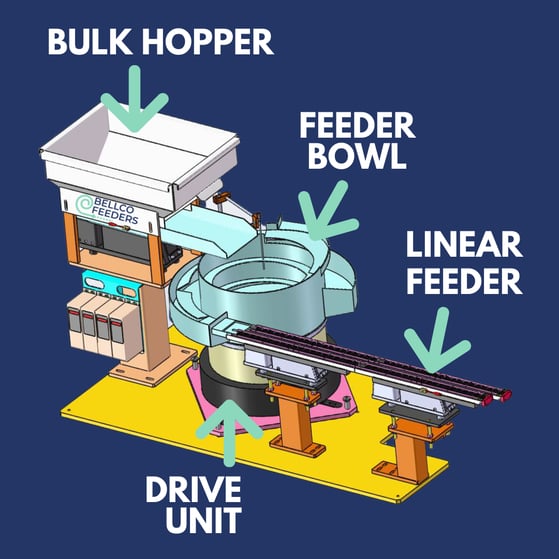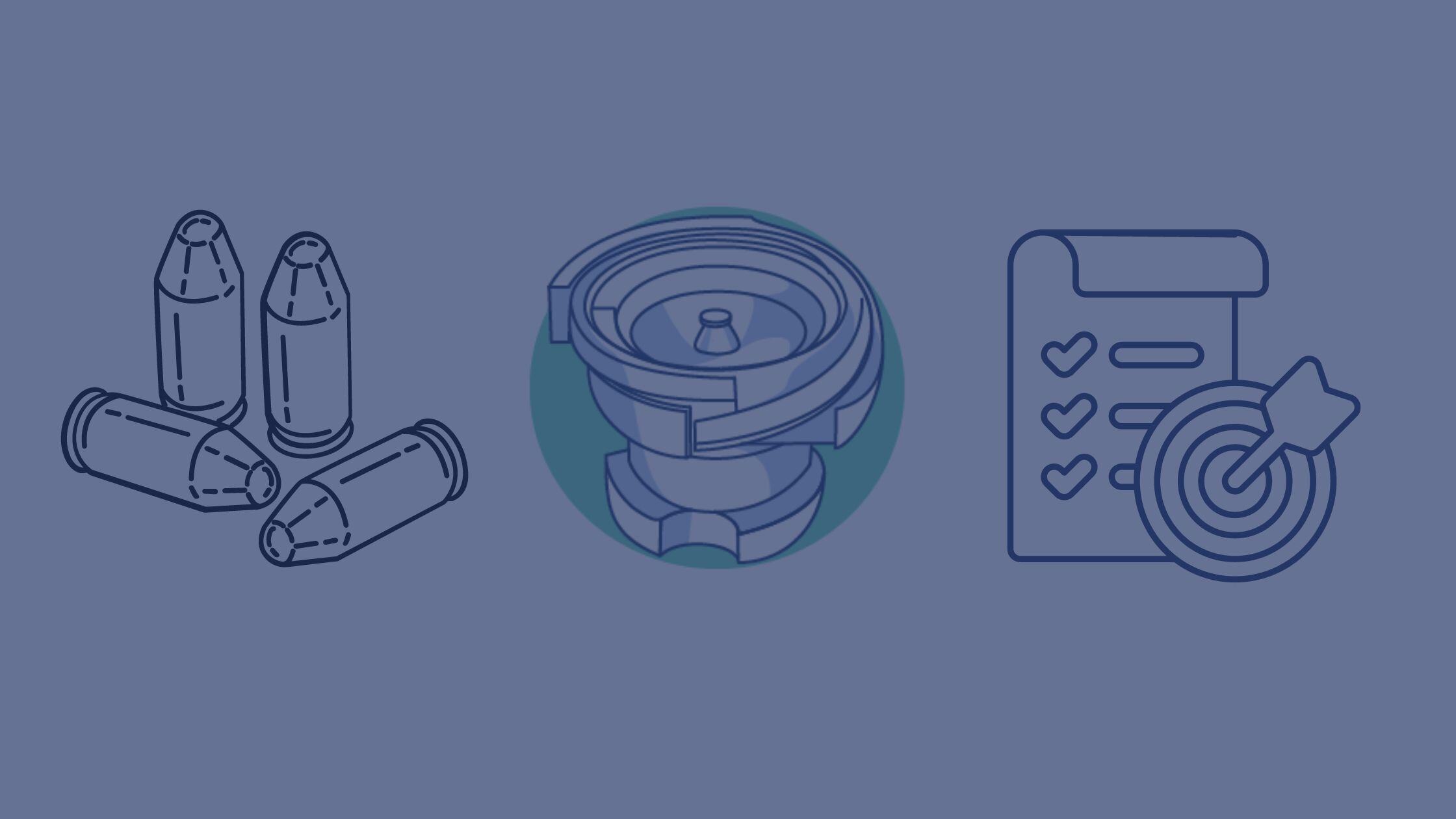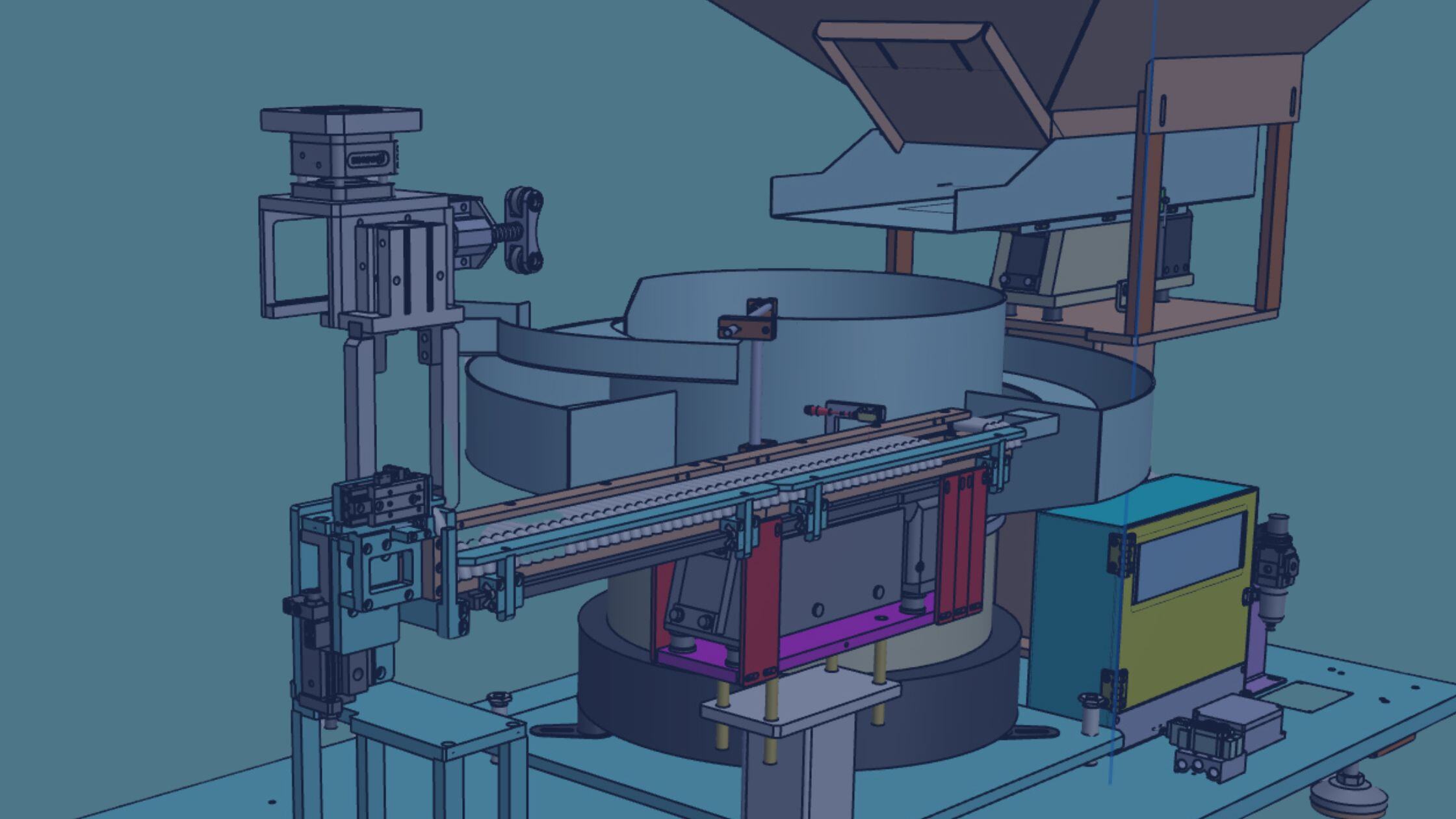Ever Wonder What The Main Components Of A Vibratory Feeder Bowl Are, And How They Work?

A vibratory feeder bowl is a simple tool manufacturers use to sort and orient parts from bulk. Feeder bowls (when designed properly) are ultra reliable, easy to maintain and can quickly sort parts from bulk into a single line.
.png?width=250&height=250&name=Feeder%20Components%20(2).png) 1. Bulk Parts Hopper
1. Bulk Parts Hopper
A parts hopper is designed to minimize operator interaction with the feeder bowl by holding a large quantity of parts. An operator can dump parts into the hopper from bulk and the hopper will automatically monitor the part levels in the feeder bowl and add more parts as needed. Parts hopper are especially important when the bowl is feeding complex parts that can’t be overcrowded, in those instances the hopper will only let a small amount of parts at a time.
.png?width=249&height=249&name=Feeder%20Components%20(3).png) 2. Vibratory Bowl Feeder
2. Vibratory Bowl Feeder
This is where the magic happens. Each feeder bowl is custom designed to sort and orient a specific part. To properly design a bowl an engineer will study the part and take the size, geometry, weight and material into consideration.
A typical design consists of a round stainless-steel bowl with cylindrical tracks a series of vibrations gently “shake” the bowl and the motion causes the parts to move throughout the internal tracks.
As the parts move, the tracks guide them into the correct position so that each part ends up oriented the same way.
.png?width=241&height=241&name=Feeder%20Components%20(1).png) 3. Drive Unit
3. Drive Unit
The drive unit is the powerhouse of the system. It uses electromagnetic energy to produce the vibrations that shake and move the parts. Typical vibration range is between 60 and 120 Hz.
.png?width=239&height=239&name=Feeder%20Components%20(4).png) 4. Linear Feeder
4. Linear Feeder
When parts exit the feeder bowl the most common way to present them to an operator or another automated system is through a linear feeder. This feeder works similarly to the bowl but because the parts are already oriented correctly, its main purpose is to move them along to exit the feeder bowl system.
A liner feeder also creates an accumulating buffer of parts which eliminates the risk of parts not feeding out fast enough from the feeder bowl.
Our team is always available to talk though your application and feeding options. We pull on years of industry and automation experience and continually deliver innovative solutions.
Our feeders are simple to operate and maintain and include all the necessary components to integrate seamlessly into a manufacturing environment, including PLC controls integration.



